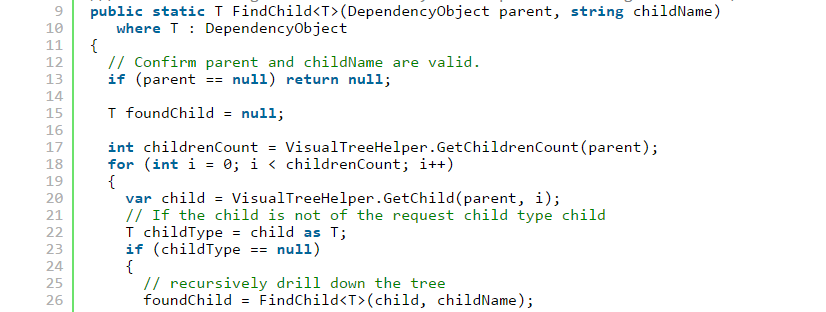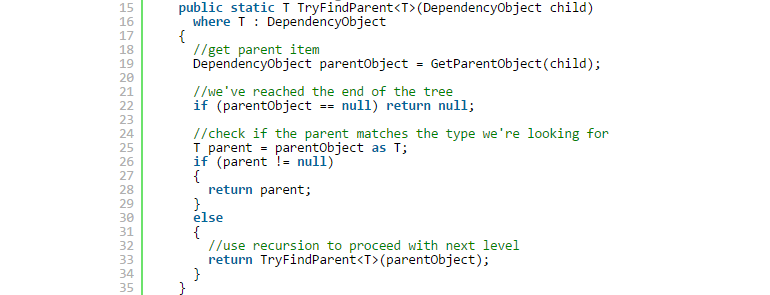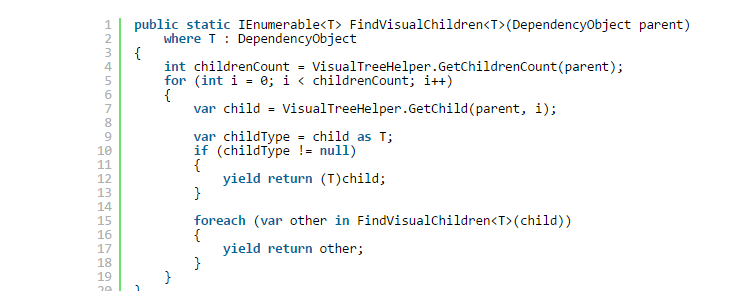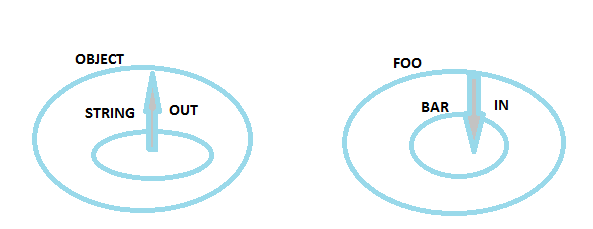
This function allows you to get a control by name and type in a given parent control VisualTree. Keep in mind that recursively searching a tree downwards could be a lengthy process. Note that if the argument name is undefined, the function returns the first found child element that matches the submitted type T. In … Continue reading “C# – How to find a control by name or type in the VisualTree”


This recursive function allows you to get all controls of a given generic type that are children of a given element in the VisualTree.

in (Generic Modifier) For generic type parameters, the in keyword specifies that the type parameter is contravariant. You can use the in keyword in generic interfaces and delegates. Contravariance enables you to use a less derived type than that specified by the generic parameter. An interface that has a contravariant type parameter allows its methods … Continue reading “C # – Understanding ‘in’ and ‘out’ (Generic Modifier)”






